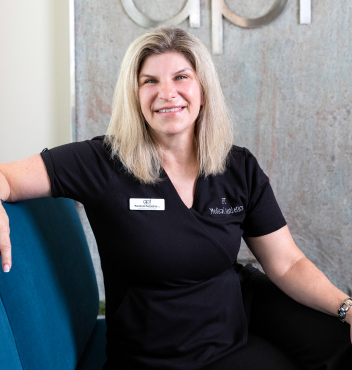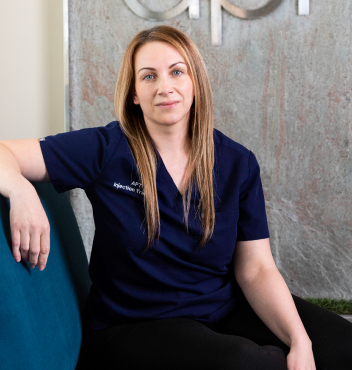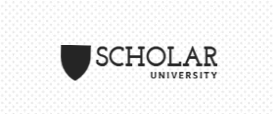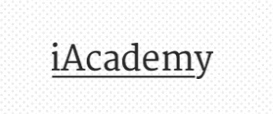blog
How to Become a Laser Technician – A Step-by-Step Guide for Ontario-Based Medical Aesthetics Professionals

May 23 2025
Reading Time: 5 Minutes
Author:
Have you ever watched a laser hair removal or skin resurfacing treatment and thought, “I could do that”? You’re not alone. As medical aesthetics continues to explode in popularity across Ontario—especially in cities like Toronto, Mississauga, Oakville, and Vaughan—more and more people are considering how they can build a fulfilling, client-focused career in this dynamic field.
One of the most exciting entry points into medical aesthetics is becoming a Laser Technician. Whether you’re brand new to the industry or already working as a medical esthetician or skincare professional, laser technology offers an opportunity to combine your passion for beauty and wellness with cutting-edge tools and treatments that truly transform skin.
But here’s the big question—what does it actually take to become a certified Laser Technician in Ontario? What qualifications do you need? How do you choose the right training path? And how does it fit into the broader landscape of advanced aesthetics like injectables?
In this guide, we’ll walk you through exactly what it means to become a Laser Technician, how to get there step by step, and how it can support a broader career in aesthetic medicine, including injectables like neurotoxins, dermal fillers, PRP, Sculptra®, and Radiesse®.
What Does a Laser Technician Do in a Medical Aesthetics Setting?
In the fast-paced and ever-evolving world of medical aesthetics, Laser Technicians play a critical role in delivering safe, effective, and non-invasive cosmetic treatments. These professionals are specially trained to operate laser and energy-based devices that address a wide variety of skin concerns and aesthetic goals. Whether working in a high-end medical spa or a physician-led cosmetic clinic, their work enhances not only the surface appearance of the skin but also the client’s overall confidence and satisfaction.
Laser Technicians are most commonly responsible for performing the following types of treatments.
- Laser hair removal – Using concentrated light energy to permanently reduce unwanted hair on the face, underarms, legs, bikini area, and more
- IPL (Intense Pulsed Light) therapy – Designed to treat pigmentation, sun damage, rosacea, and diffuse redness for a clearer, more even skin tone
- Non-ablative skin resurfacing – Gentle fractional treatments that help improve skin texture, reduce fine lines, and refine pores without significant downtime
- Skin tightening – Utilizing radiofrequency or light-based platforms to stimulate collagen production, improving firmness and elasticity
- Acne and acne scar treatments – Reducing inflammation, targeting bacteria, and improving post-acne scarring through laser or light therapies
- Tattoo removal – In more advanced clinical settings, Laser Technicians may be trained in laser removal of unwanted ink using Q-switched or picosecond lasers
In a medical aesthetics setting, Laser Technicians often work under the supervision of a licensed medical director—such as a physician or nurse practitioner—and within a collaborative team that may include injectors, aestheticians, and skincare specialists. They are responsible for performing client consultations, assessing treatment areas, documenting care plans, and following strict health and safety protocols to ensure both effective outcomes and patient safety.
Although they do not perform injectables or handle prescriptions, their role is often highly complementary to injectable services like Botox®, dermal fillers, PRP, Sculptra®, or Radiesse®. In many cases, laser treatments are used to prep the skin before injectables or to maintain and enhance the results over time. For example, IPL can be used to even out skin tone after filler treatments, or radiofrequency skin tightening treatments can improve facial contours between neurotoxin appointments.
By blending technical skill with strong interpersonal communication, Laser Technicians help clients feel informed, comfortable, and excited about their treatment journey. Whether someone is just starting to explore non-invasive options or is undergoing a full facial rejuvenation plan, the Laser Technician is often one of the most hands-on and influential roles in the clinic.
This career path is ideal for individuals who enjoy combining technology, artistry, and client care, and who are passionate about helping people look and feel their best without surgery or downtime.
Who Can Become a Laser Technician in Ontario?
In Ontario, you do not need to be a regulated healthcare professional to become a Laser Technician. This makes it an excellent career choice for individuals from a wide variety of backgrounds, including the following.
- Medical estheticians or skincare therapists
- Spa professionals looking to move into the medical space
- Recent graduates of high school or post-secondary programs with a strong interest in aesthetics
- Individuals looking to transition from other industries into a growing, hands-on, people-first profession
Although you don’t need to be a nurse or doctor to perform most laser treatments, you do need proper training, education, and certification to ensure your practice is safe, ethical, and aligned with industry standards.
The Step-by-Step Guide – How to Become a Laser Technician in Ontario
Here’s what your path might look like if you’re ready to take the leap into laser technology.
Step 1 – Make Sure You Meet the Minimum Requirements
Most reputable training programs require students to be at least 18 years old and have completed a high school diploma or equivalent. A background in esthetics or science is a bonus but not always required.
If you’re planning to work in a medical spa setting (especially those that also offer injectables), it helps to have some basic understanding of skin anatomy, contraindications, and client care.
Step 2 – Enroll in a Laser Theory and Safety Program
Your first major step will be to complete a laser theory course that covers all the fundamental principles of laser and light-based devices. At APT Injection Training, we offer an online-based Laser and Light Theory course, which introduces learners to the following.
- Laser physics and energy-based devices
- Skin and hair anatomy
- Fitzpatrick skin typing
- Treatment parameters
- Contraindications and safety protocols
- Patient consultation and documentation best practices
This kind of education gives you a strong foundation before you move into hands-on experience.
Step 3 – Gain Hands-On Experience with Real Devices
After completing a theoretical course, the next essential step is hands-on training. This may take place through workshops, in-clinic shadowing, or by enrolling in a more comprehensive in-person laser technician program. Hands-on practice allows you to become familiar with the following.
- Different types of devices (IPL, Nd:YAG, diode, RF)
- Patient preparation and post-care
- Real-time troubleshooting
- Treatment techniques for various skin types and concerns
While Ontario does not currently regulate laser technicians under a college or licensing body, industry standards strongly recommend certified, documented training, particularly if you plan to work in a clinic offering medical aesthetic services.
Step 4 – Build Clinical Confidence and Start Practicing
Once trained, you can begin working as a Laser Technician in a range of environments, including the following.
- Medical spas
- Dermatology clinics
- Cosmetic surgery centers
- Wellness clinics
- Partnering with nurse injectors or physicians
As your experience grows, you can refine your specialties, build your clientele, and even explore leadership or teaching roles in the industry.
A Real-Life Story – From Esthetics to Advanced Technology
Meet Lara, a former spa esthetician from Mississauga who wanted more challenge and career growth. After completing a laser theory course and hands-on certification, she was hired by a medical aesthetics clinic in Oakville where she performs IPL photofacials, skin tightening, and combination therapy for sun damage and redness. Now, she collaborates with a nurse injector to create full facial rejuvenation plans for clients. Laser was her entry point into medical aesthetics—but today, she’s exploring dermal filler training through APT to take her career even further.
Frequently Asked Question – Can a Laser Technician Also Offer Injectables?
Not unless they are a regulated healthcare professional in Ontario. Only RPNs, RNs, NPs, MDs, and dentists are eligible to perform cosmetic injectable treatments like Botox®, dermal fillers, PRP, and biostimulatory injectables such as Sculptra® and Radiesse®.
That said, many Laser Technicians do eventually pursue a nursing license so they can expand into injectables. This creates an ideal blend of skin rejuvenation, laser technology, and injectable artistry.
Is Becoming a Laser Technician the Right Fit for You?
Ask Yourself
- Do you love working directly with clients to improve their skin and confidence?
- Are you curious about energy-based devices and how they can be used safely and effectively?
- Do you want a fast-paced, creative, and meaningful career with long-term growth potential?
If yes, becoming a Laser Technician could be the perfect path forward—especially if you see yourself eventually branching into advanced treatments or partnering with injectors.
The Next Step – Grow Your Career with APT Injection Training
Whether you’re exploring your very first training course or preparing to expand your skillset into injectables, APT Injection Training offers education built on real clinical experience, high safety standards, and a deep understanding of what it takes to succeed in medical aesthetics.
📞 Call us today to speak with a team member about your goals and learn more about our Laser and Light Theory Course or our injectables training for regulated professionals.
Let us help you build the foundation for a strong, confident, and rewarding career in the world of aesthetic medicine.
Your future in medical aesthetics starts here—with the right training and the right support.
Tips to be a
Successful Injector!
Free E-Book download
 Student Log in
Student Log in
 1267 Cornwall Rd, Unit 300, Oakville, Ontario L6J 7T5
1267 Cornwall Rd, Unit 300, Oakville, Ontario L6J 7T5

 (289) 271-5718
(289) 271-5718




































